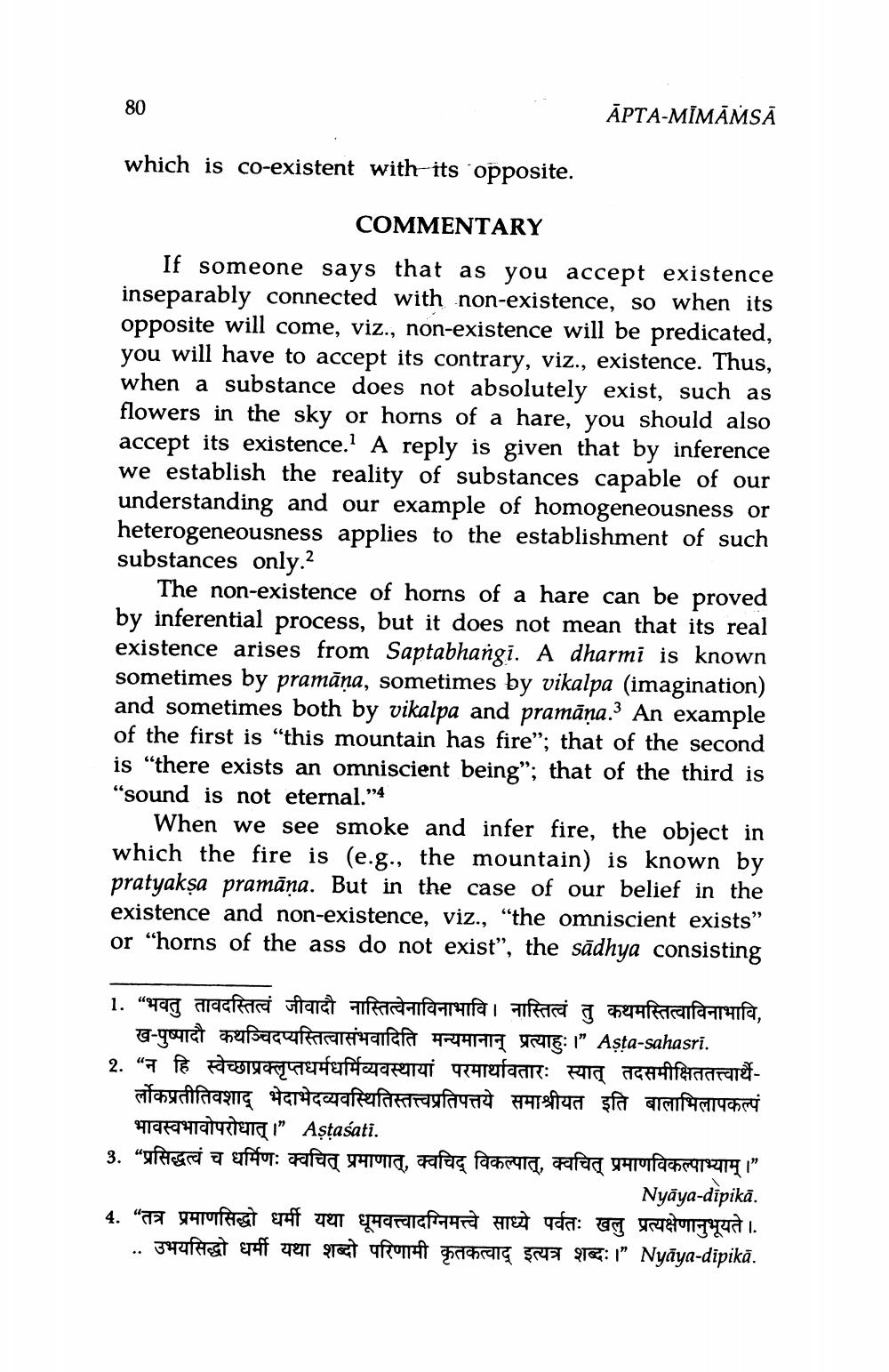________________
ĀPTA-MĪMĀMSĀ
which is co-existent with its opposite.
COMMENTARY If someone says that as you accept existence inseparably connected with non-existence, so when its opposite will come, viz., non-existence will be predicated, you will have to accept its contrary, viz., existence. Thus, when a substance does not absolutely exist, such as flowers in the sky or horns of a hare, you should also accept its existence. A reply is given that by inference we establish the reality of substances capable of our understanding and our example of homogeneousness or heterogeneousness applies to the establishment of such substances only.2
The non-existence of horns of a hare can be proved by inferential process, but it does not mean that its real existence arises from Saptabhangi. A dharmi is known sometimes by pramāņa, sometimes by vikalpa (imagination) and sometimes both by vikalpa and pramāņa.3 An example of the first is “this mountain has fire”; that of the second is "there exists an omniscient being"; that of the third is "sound is not eternal."4
When we see smoke and infer fire, the object in which the fire is (e.g., the mountain) is known by pratyaksa pramāņa. But in the case of our belief in the existence and non-existence, viz., "the omniscient exists” or "horns of the ass do not exist”, the sādhya consisting
1. “भवतु तावदस्तित्वं जीवादौ नास्तित्वेनाविनाभावि। नास्तित्वं तु कथमस्तित्वाविनाभावि,
a-go4it sussegueritafa RIHTI TIE: 1" Asta-sahasri. 2. "न हि स्वेच्छाप्रक्लृप्तधर्मधर्मिव्यवस्थायां परमार्थावतारः स्यात् तदसमीक्षिततत्त्वार्थे
र्लोकप्रतीतिवशाद् भेदाभेदव्यवस्थितिस्तत्त्वप्रतिपत्तये समाश्रीयत इति बालाभिलापकल्पं
746T41014 TTCI" Astašati. 3. “प्रसिद्धत्वं च धर्मिणः क्वचित् प्रमाणात्, क्वचिद् विकल्पात्, क्वचित् प्रमाणविकल्पाभ्याम्।"
Nyāya-dipikā. 4. “तत्र प्रमाणसिद्धो धर्मी यथा धूमवत्त्वादग्निमत्त्वे साध्ये पर्वतः खलु प्रत्यक्षेणानुभूयते।.
.. 344f het erf en great forrit hang FRETE: ” Nyāya-dipikā.




